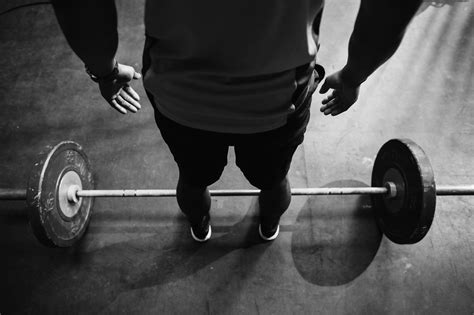What’s the most time-efficient strength training for men’s peak performance?

Maximizing Gains: Smart Training for Busy Men
In today’s fast-paced world, many men aspire to reach peak physical performance but struggle to find the time for extensive gym sessions. The good news is that achieving impressive strength, endurance, and overall fitness doesn’t require living at the gym. The key lies in strategic, time-efficient strength training that maximizes every minute spent exercising. This article will delve into the principles and methods that deliver peak results with minimal time investment.

The Pillars of Time-Efficient Strength
To get the most bang for your buck, your training must focus on effectiveness and intensity. Here are the core principles:
1. Compound Movements Are King
The cornerstone of any efficient strength program is compound exercises. These movements engage multiple joints and muscle groups simultaneously, allowing you to work more muscles in less time. Instead of isolating biceps with curls, choose exercises that hit your back, biceps, and core all at once. Examples include:
- Squats: Works quads, glutes, hamstrings, core.
- Deadlifts: Engages virtually every muscle in the posterior chain, back, and grip.
- Bench Press: Targets chest, shoulders, triceps.
- Overhead Press: Strengthens shoulders, triceps, upper back, core.
- Rows: Develops back, biceps, and grip strength.
2. Intensity Over Volume
While traditional bodybuilding often emphasizes high volume, time-efficient training prioritizes intensity. This means lifting heavier weights for fewer sets and reps (within a safe range, of course), or reducing rest times between sets. High-intensity resistance training (HIRT) and supersets are excellent methods to achieve this, elevating your heart rate and taxing your muscles more quickly.

3. Strategic Rest Periods
Long rest periods eat into valuable gym time. To be efficient, consider:
- Supersets: Performing two different exercises back-to-back with no rest in between (e.g., bench press immediately followed by rows).
- Circuit Training: Moving through a series of exercises with minimal rest, completing one “circuit” before a short break.
- Reduced Rest: Aiming for 60-90 seconds of rest for heavier lifts and 30-60 seconds for lighter, accessory work.
Recommended Time-Efficient Training Strategies
Full-Body Workouts (2-3 Times/Week)
Full-body workouts are arguably the most time-efficient approach for men looking to build strength and size. By hitting all major muscle groups in a single session, you can stimulate growth and strength gains without needing to train every day. A typical full-body session might involve 1-2 compound exercises per major muscle group (upper push, upper pull, lower body). Training 2-3 times per week allows for adequate recovery and consistent stimulus.

High-Intensity Resistance Training (HIRT)
HIRT blends strength training with cardiovascular benefits. It involves performing resistance exercises with very short rest periods, keeping your heart rate elevated throughout the workout. This approach not only builds strength and muscle but also significantly improves conditioning in a compressed timeframe. Think of it as lifting weights with the intensity of HIIT.
Supersets & Giant Sets
For even greater efficiency, integrate supersets (two exercises back-to-back) or giant sets (three or more exercises back-to-back, often targeting the same muscle group or opposing groups). This dramatically reduces total workout time while maintaining or even increasing the training stimulus. For example, a giant set could involve squats, lunges, and calf raises with minimal rest in between.

Sample Time-Efficient Workout Structure (30-45 minutes)
Here’s an example of how you could structure a highly efficient full-body workout:
- Warm-up: 5-10 minutes of light cardio and dynamic stretching.
- Main Lifts (Compound Focus):
- Barbell Squats: 3 sets of 5-8 reps (90 seconds rest)
- Barbell Bench Press: 3 sets of 5-8 reps (90 seconds rest)
- Barbell Rows: 3 sets of 5-8 reps (90 seconds rest)
- Accessory Superset/Circuit: (Perform exercises back-to-back with minimal rest, then rest 60 seconds after completing the circuit, repeat 2-3 times)
- Overhead Press: 8-12 reps
- Pull-ups (or Lat Pulldowns): Max reps / 8-12 reps
- Plank: 30-60 seconds hold
- Cool-down: 5 minutes of static stretching.
This type of workout, performed 2-3 times a week, can deliver significant strength and performance improvements for most men without demanding hours in the gym.
Beyond the Lifts: The Holistic Approach
Time-efficient strength training is incredibly effective, but it’s only one piece of the puzzle for peak performance. Don’t neglect:
- Nutrition: Fuel your body with adequate protein, complex carbohydrates, and healthy fats.
- Recovery: Prioritize 7-9 hours of quality sleep per night. Active recovery (light walks, stretching) can also aid performance.
- Consistency: Even the best program won’t work if you don’t stick to it. Consistency, even with shorter workouts, trumps sporadic long sessions.

Conclusion
Achieving peak performance for men doesn’t require endless hours in the gym. By focusing on compound movements, high intensity, strategic rest, and efficient programming like full-body workouts and supersets, you can build impressive strength, muscle, and conditioning in a fraction of the time. Combine this smart training with solid nutrition and recovery, and you’ll be well on your way to unlocking your full potential.








